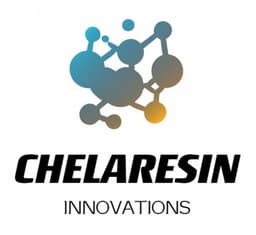
Ion Exchange Resins Market 2024-2028
According to a report by Technavio, the global ion exchange resin market is projected to increase by $476.55 million by 2028, with a compound annual growth rate (CAGR) of 5.97%. This growth is primarily driven by the increasing demand from the food and beverage industry, though it also faces challenges due to limited selectivity. The Asia-Pacific region is expected to contribute 42% to the market growth, with notable applications in water treatment in China and India.

Key Market Drivers and Challenges
The market's expansion is driven by increased demand from the food and beverage sector. However, its growth is hampered by the limited selectivity of ion exchange resins. Additionally, there is a significant trend toward ecologically sustainable practices across various industries.
Market Size During the Forecast Period
Regional Insights
APAC Region
APAC is projected to contribute 42% to the global market's growth during the forecast period. Analysts from Technavio have provided in-depth insights into regional trends and drivers affecting the market. The rapid growth in APAC is supported by expanding sectors such as water treatment, pharmaceuticals, and chemicals. Countries like China and India are increasingly using ion exchange resins for efficient water filtration to address water scarcity. In China, companies like Beijing Capital Group use these resins for water softening and demineralization, enhancing municipal water quality. SUEZ Water Technologies and Solutions also promote market growth by offering innovative ion exchange solutions for water treatment plants in the region.
In the pharmaceutical industry, companies such as Sun Pharmaceutical Industries in India use ion exchange resins in medicine formulation to ensure high product quality. Firms like Biocon in India employ these resins in bioprocessing activities for optimal purification results. Moreover, the APAC chemical sector utilizes ion exchange resins for various operations, including catalysis and chemical purification, contributing to regional market growth.
Key Market Trends and Challenges
Growth Drivers
The increasing demand from the food and beverage industry significantly drives market growth. The need for high-purity water and improved product quality is propelling the global market forward. Ion exchange resins play a crucial role in industrial water treatment processes by removing pollutants, toxins, and unwanted ions. They help achieve the desired water quality in beverage production by eliminating ions that could affect taste, odor, or color. Additionally, these resins improve food product quality by efficiently removing excess minerals or contaminants. As the global food and beverage industry grows, so will the demand for ion exchange resins to meet quality standards and regulatory requirements, fostering market innovation.
Sustainability Trends
The growing focus on sustainable practices across different sectors is an emerging trend influencing market growth. Ion exchange resins promote sustainability by enabling resource recovery, water recycling, and chemical waste reduction. These resins assist in removing contaminants from water, supporting water recycling projects. In the semiconductor industry, they produce ultrapure water while reducing chemical usage and environmental impact. In mining hydrometallurgical operations, ion exchange resins aid in the efficient recovery of valuable metals, contributing to sustainable resource management. As industries increasingly adopt eco-friendly practices, the various applications of ion exchange resins position them as key components in achieving environmental goals, driving market growth and trends during the forecast period.
Challenges
The limited selectivity of ion exchange resins poses a significant challenge to market growth. The restricted selectivity in certain resins limits their widespread adoption and effectiveness in specific applications, such as metal recovery or targeted pollutant removal in water treatment. Continuous innovation is needed to overcome this challenge. Manufacturers like Purolite are investing in developing resins with improved selectivity profiles for more specific and efficient ion capture. Tailoring resins for specialized applications, requiring high selectivity for particular pollutants or ions, is essential for overcoming this issue and ensuring the market's long-term growth. Such factors will impede market growth during the forecast period.
